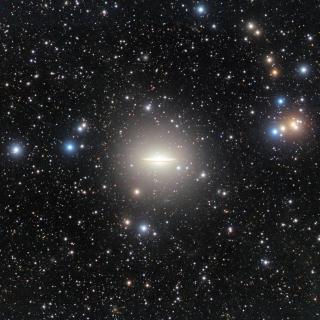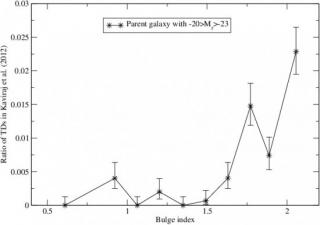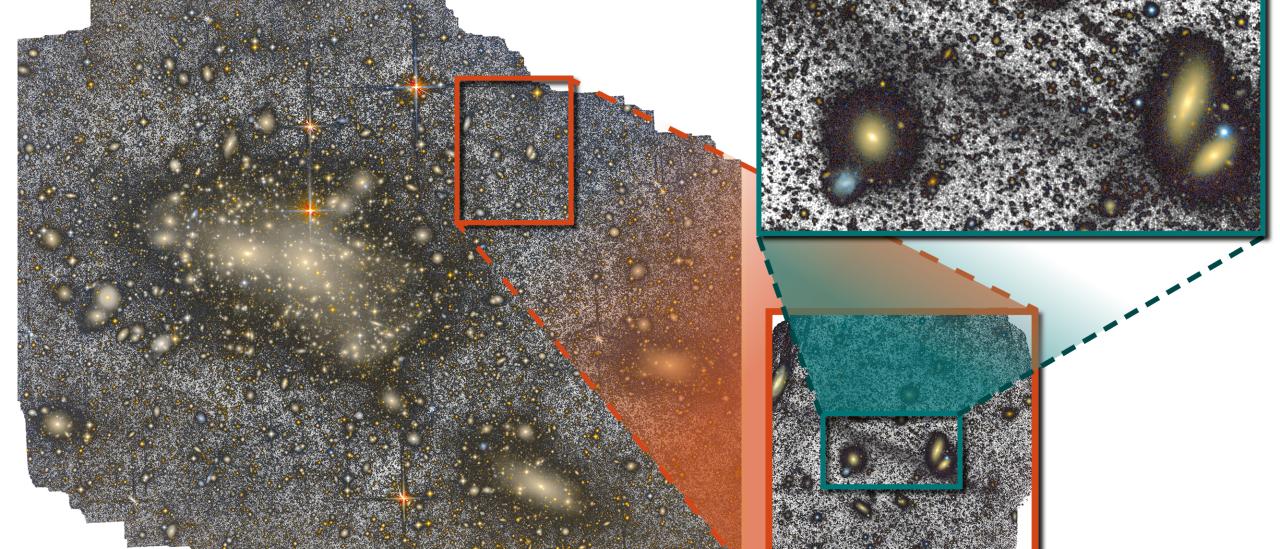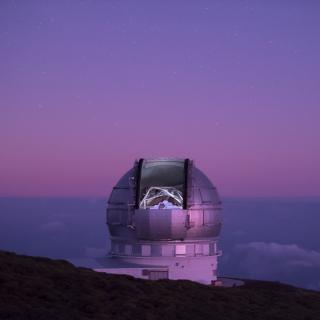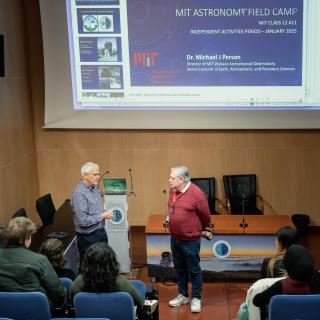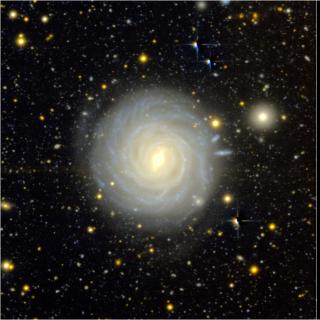Images obtained with the Jeanne Rich (HERON) and William Herschel (WHT) telescopes, in which we can see the Giant Coma stream, a stellar stream (dark line) ten times longer than the size of the Milky Way and which flows between galaxies (in colour) 300 million light-years away. Credit: HERON/ WHT/ Román et al. Design: Inés Bonet (IAC)
An international team of scientists, with participation by researchers at the Instituto de Astrofísica de Canarias (IAC), has discovered a very large, but thin, stream of stars in the Coma cluster of galaxies. This is the largest stream of stars detected until now, and the first to be found in a cluster of galaxies. This finding, which is published in the journal Astronomy and Astrophysics, was made using observations taken with the William Herschel Telescope (WHT) at the Roque de los Muchachos Observatory (Garafía, La Palma, Canary Islands).
The Coma Cluster is a large cluster of galaxies, comprising thousands of galaxies, some 300 million light years from Earth, in the direction of the northern constellation of Coma Berenices. It is one of the most extensively studied clusters, because some of its brightest members can be observed using quite a small telescope.
An international team of researchers led from the University of Groningen (Netherlands) and the University of La Laguna (ULL) has observed this region in detail using the WHT, a 4.2m telescope at the Roque de los Muchachos Observatory (ORM) in La Palma. When they processed the images they found a very thin stream of stars, more than ten times longer than the diameter of the Milky Way, which flows through the cluster but is not associated with any galaxy in particular.
“At first our aim was to study the halos of stars around the galaxies of Coma. To our surprise the data revealed an amazing giant stream of stars, not previously known” explains Javier Román, a researcher at the University of Groningen and the ULL, who has led this study. “Follow-up studies with the WHT confirmed that this structure is real, and we could measure its extreme properties in detail” he adds.
According to this team of scientists, who have named the object the “Giant Coma Stream”, this is an unprecedented discovery, because the observations show a very fragile structure in the middle of a hostile environment of galaxies which attract and interact with each other.
“This type of extremely faint stellar streams with such a thin morphology have been detected previously only within the Local Group, that is in our own Galaxy, and nearby galaxies, but it is the first time that anything similar has been detected in a cluster of galaxies, and it is the largest one detected until now. Our study also suggests, after analyzing cosmological simulations, that this type of structures could be quite frequent in clusters of galaxies” says Román.
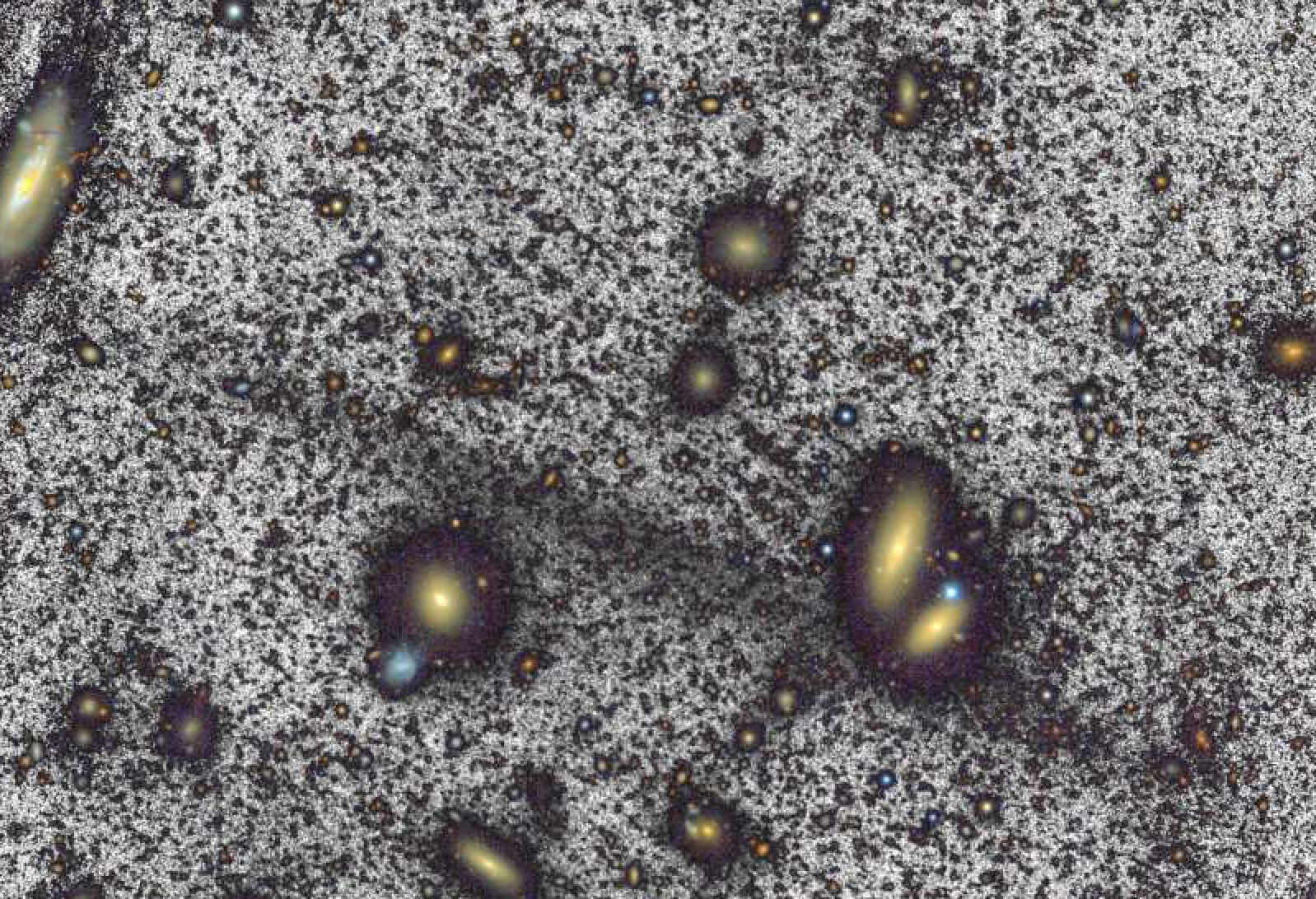
In the coming years these researchers plan to discover new giant streams, using the new generation of telescopes. “We expect to find more of this type of objects using the 39 metre Extremely Large Telescope (ELT), or when the space mission EUCLID starts to give data” states Reynier Peletier, a researcher at the University of Groningn, and a co-author of the article.
For the team it is also basic to carry on with the study of this particular giant stream of stars in the Coma Cluster, which is one of the first in which the observed gravitational anomalies indicated the presence of a mass which is not detected directly, now called 'dark matter'.
“It is hard not to be impressed with this newly discovered structure. It is so huge that if we could put it between our Galaxy and the Andromeda galaxy, it would join the two with a bridge of stars” points out Ignacio Trujillo, an IAC researcher who also took part in the study. “A structure of this kind gives a unique to study whether dark matter is organized into halos, which is predicted by the theory of cold dark matter, because those halos, if they exist, would cause holes as they intercept the stream of stars. Until now we have not seen them, but it is the next aim of our research” he concludes.
Article: Javier Román et al. “A giant thin stellar stream in the Coma Galaxy Cluster”. Astronomy & Astrophysics, 2023. DOI: https://doi.org/10.1051/0004-6361/202346780
Contacts:
Javier Román, jromanastro [at] gmail.com (jromanastro[at]gmail[dot]com)
Ignacio Trujillo, itc [at] iac.es (itc[at]iac[dot]es)
